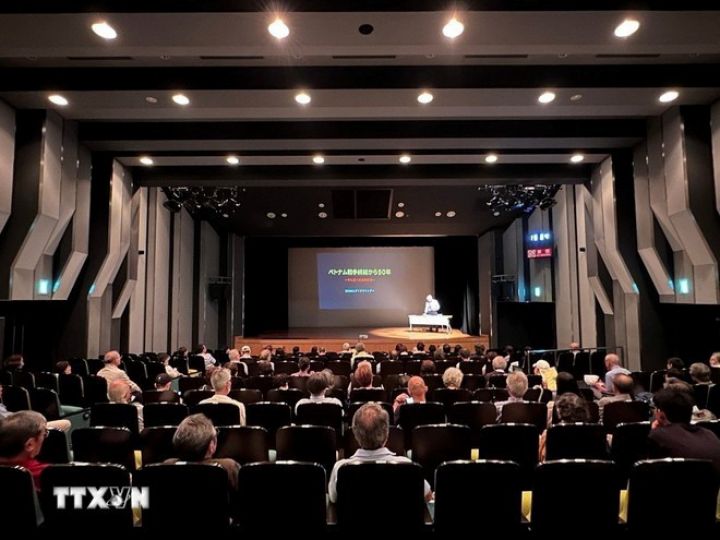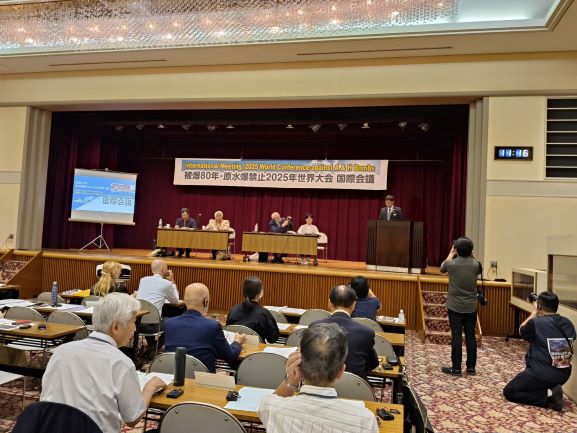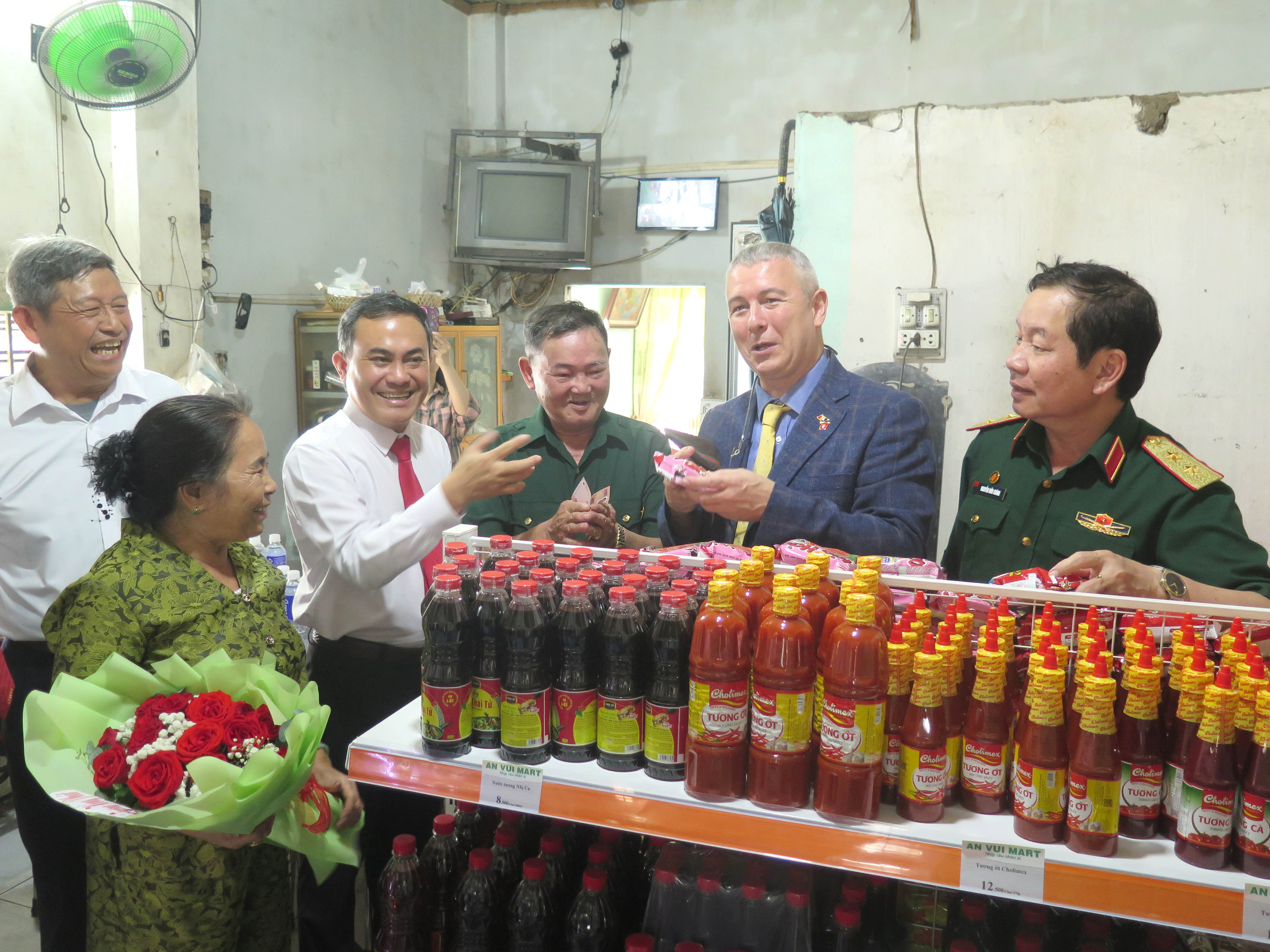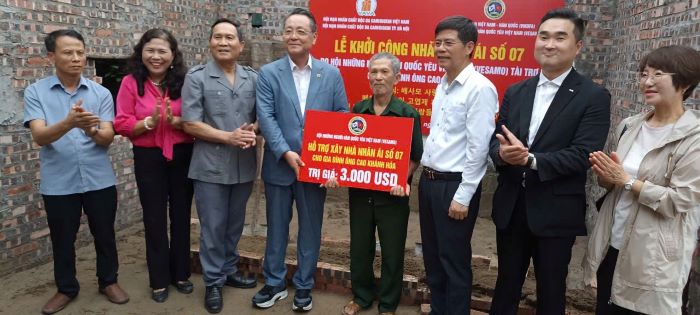In 1961, as soon as the US first started their "Special War" strategy, some US military advisors had the "initiative" to use defoliates to clear the trees where suspected Viet Cong guerrillas used to hide in.
Plan 202 (deforestation and destruction of enemy crops) in 1961.
|
|
Priority |
Location |
|
2R Crop destruction |
1 |
War Zone D, Duong Minh Chau |
|
2 |
Secret Zone VC in Ninh Thuan |
|
|
3 |
Fields in Pleiky, Kontum |
|
|
4 |
Secret zone Khanh Hoa |
|
|
5 |
Fields in Binh Dinh |
|
|
6 |
Fields in Phu Yen |
|
|
7 |
Fields in Binh Thuan |
|
|
8 |
Fields in Quang Duc, Lam Dong |
|
|
20T Defoliation |
1 |
War Zone D |
|
2 |
War Zone Duong Minh Chau |
|
|
3 |
Secret zones |
|
|
4 |
- Along the western boundary and the Vietnam – Laos border - Strategic routes |
January 8, 1961
From January 8 to 25, 1961, a Research and Development Group, headed by William H. Godel, Deputy Director of the Department of Advanced Research Projects of the Department of Defense (Advanced Research Project Agency) visited South Vietnam to discuss with Vietnamese officials on the establishment of the Vietnam-US Joint Research and Development Center. The visit is in accordance with the provisions of Article 20 of the Presidential Program for the Republic of Vietnam. (Document 56). In a conversation with Godel and Mrgarr on January 15, President Diem expressed that, among new military technologies he was very interested in the development of a defoliant. (Telegram MAGCH - CS 921, June 16; Washington National Center Records, RG 330, Landsdale Files: FRC 63 A 1803).
As a result of this visit, President Diem directed the armed forces of the Republic of Vietnam to establish the Center for Development and Operation of Capabilities commanded by a senior engineer officer, Senior Colonel Trach , who reported to him (Diem) through the Chiefs of Staff of the armed forces. General McGarr agreed with the Study Group's recommendation about establishing a separate organisation within the Military Advisory and Aid Group (MAAG), a five-person Research and Development Office to manage joint operations. The group also developed a motto for establishing the Center that was later approved by President Diem and Ambassador Nolting. Working with MAAG representatives and ARVN agencies, the Godel Study Group also drafted an initial list of issues and proposed projects to be considered by the Center. In a memorandum dated July 12 to Lansdale, Godel reported on the background and results of the R&D Group’s visit. Attached to the memorandum is a copy for the Center and a list of issues and proposed projects.
MAAG: To assist the French expeditionary force against Vietnam, in September 1950, US President Harry Truman sent a Military Advisory Mission to Vietnam. The mission was not to engage in direct combat, but rather to oversee the use of the $10-million military equipment aided for the France in its efforts to fight Viet Minh forces.
After the Geneva Accords, the French military withdrew from Vietnam. On December 12, 1955, the US Government decided that US military aid would be transferred directly to the Ngo Dinh Diem Government and the main military responsibility would be transferred from the French to MAAG under the command of Lieutenant General John O'Daniel. By June 1956, the advisors at MAAG amounted to 740 people, divided into 4 groups in each country of Vietnam, Laos, and Cambodia.
A summary report by Godel on his visit was delivered at the Seminar on Southeast Asia at the Diplomatic Academy on July 6, 1963. Godel discussed the results of his trip to Vietnam with the Vietnam Working Group. William Godel, an expert on psychological warfare techniques and practices of the US Department of Defense. The Republic of Vietnam responded to the idea of a Center for Experiment and Development of Capabilities with great enthusiasm: President Diem himself conducted no less than three personal interviews with Godel and appointed Senior Colonel Trach as Director of the Center. (Trach was placed under the direct supervision of the President). Among the new military equipment introduced by Godel was an alarm system that could warn the ARVN at a distance of 25 miles. Another experiment was a defoliant to detect border intrusion areas. This was a costly operation that lasted for three years with maximum effectiveness. Godel talked about plant hormones (2,4-D and 2,4,5-T) to eliminate the cassava plants that fed Viet Cong troops while operating in the mountainous areas of northern South Vietnam. /Foreign Relations US, 1961-1963, Vol 1, Vietnam-Foreign Relations of the United States, 1961 - 1963/.
February 30, 1961
Establishment of Committee 202.
The clearing and destruction of crops were carried out by the Saigon government according to the policy and with the aid of the US Government through the US Military Assistance Command in Vietnam (MACV). The implementation was assigned by the Saigon government to a Committee coded UB-202, established on February 30, 1961 under the General Staff of the Army of the Republic of Vietnam.
MACV was established on February 8, 1962, nominally commanding all US military forces in Vietnam, but in reality, having military command authority over all US military forces, forces of the Republic of Vietnam and the US allies in Vietnam, including: Australia, New Zealand, South Korea, Philippines, Thailand, Taiwan. This made President Ngo Dinh Diem very uncomfortable and he sought many measures to reduce MACV's influence on his power. This was also a reason for a military coup which led to his death a year later.
MACV affiliated units included:
1. Army Command (United States Army, Vietnam - USARV).
2. Naval Forces, Vietnam (NAVFORV).
3. Seventh Air Force, Vietnam-7AF.
4. Marine Amphibious Force-III, MAF.
5. Field Force No. 1 (I Field Force, Vietnam-I FFV).
6. Field Force No. 2 (II Field Force, Vietnam-II FFV).
7. 24th Army Corps (XXIV Corp).
8. 5th Special Forces Group.
9. Civil Operations and Rural Development Support (CORDS).
10. Study and Observations Group (SOG).
Commander of MACV in the 1962 – 1973 period:
|
Order |
Name |
Rank |
Term |
|
1 |
Paul D. Harkins |
General |
2/1962 – 6/1964 |
|
2 |
William C. Westmoreland |
General |
6/2964 – 7/1968 |
|
3 |
Creighton W. Abrams |
General |
7/1968 – 6/1972 |
|
4 |
Frederick C. Weyand |
General |
6/1972 – 3/1973 |
TACTICAL REGION I
Tactical Region 1 - Army Corps 1 was established on June 1, 1957, including the provinces of Quang Tri, Thua Thien, Quang Nam, Quang Tin, and Quang Ngai. Tactical Region 1 Command was located in Da Nang. Its affiliated tactical zones included Tactical Area 11 (Command located in Hue) consisting of Quang Tri and Thua Thien sub-zones; Tactical Area 12 (command headquarters located in Tam Ky) consisting of Quang Ngai, Quang Tin sub-zones and the special area of Quang Nam - Da Nang.
TACTICAL RERION 2
Tactical Region 2 - Army Corps 2 was established on October 1, 1957, operating in the entire Central Highlands and Southern Central Coast, including the provinces of Kontum, Pleiku, Phu Bon, Binh Dinh, Phu Yen, Dak Lak, Khanh Hoa, Quang Duc, Tuyen Duc, Ninh Thuan, Lam Dong and Binh Thuan. In the 2nd tactical zone, there was a semi-autonomous special tactical zone, known as Special Zone 24 located in Kontum town, run by the 24th independent regiment which was responsible for the entire border area with Laos (established in July 1966 and dissolved in April 1970). Tactical Region 2 Headquarters was located in Pleiku including tactical area 22 (Command in Quy Nhon) with sub-regions of Binh Dinh, Phu Yen, Phu Bon; Tactical Zone 23 (Headquartered in Buon Ma Thuot) including the sub-zones of Dak Lak, Tuyen Duc, Quang Duc, Khanh Hoa, Lam Dong, Binh Thuan and Ninh Thuan).
TACTICAL REGION 3
Tactical Region 3 - Army Corps 3 was established on March 1, 1959, and first operated on May 20, 1960, including the provinces of Phuoc Long, Binh Duong, Bien Hoa, Binh Long, Long Khanh, Phuoc Tuy, Tay Ninh, Hau Nghia, Long An. Saigon and Gia Dinh established their own military sub-zones. Tactical Region 3 had Tactical Area 31 (headquartered in Tay Ninh) including Tay Ninh, Hau Nghia, Long An sub-areas; Tactical Area 32 (headquartered in Binh Duong) included sub-areas of Binh Long, Phuoc Long, Binh Duong; Tactical Area 33 (Command in Bien Hoa) included sub-areas Long Khanh, Binh Tuy, Phuoc Tuy, Bien Hoa, and Thu Do Special Area (SG - Gia Dinh).
TACTICAL ZONE 4
Tactical Region 4 - Army Corps 4 was established on January 1, 1963, operating in the entire Mekong Delta, accounting for nearly half of the population and arable land in Southern Vietnam, including the provinces Go Cong, Kien Truong, Dinh Truong, Kien Hoa, Kien Phong, Sa Dec, Vinh Long, Vinh Binh, Chau Doc, An Giang, Phong Dinh, Ba Xuyen, Kien Giang, Chuong Thien, Bac Lieu and An Xuyen. The Semi-autonomous special tactical zone 44 was located in the 4th tactical region, responsible for protecting security in the northwestern region of the Mekong Delta, along the Vietnam-Cambodia border, operating until 1973, when it was dissolved. Tactical region 4 had tactical zone 41 (headquartered in My Tho) including the sub-zones of Chau Doc, An Giang, Sa Dec, Vinh Long, Vinh Binh; Tactical Zone 42 (headquartered in Can Tho) included the sub-areas of Kien Giang, Phong Dinh, Chuong Thien, Ba Xuyen.
Vava




_thumb_720.jpg)

_thumb_720.jpg)



























Comment